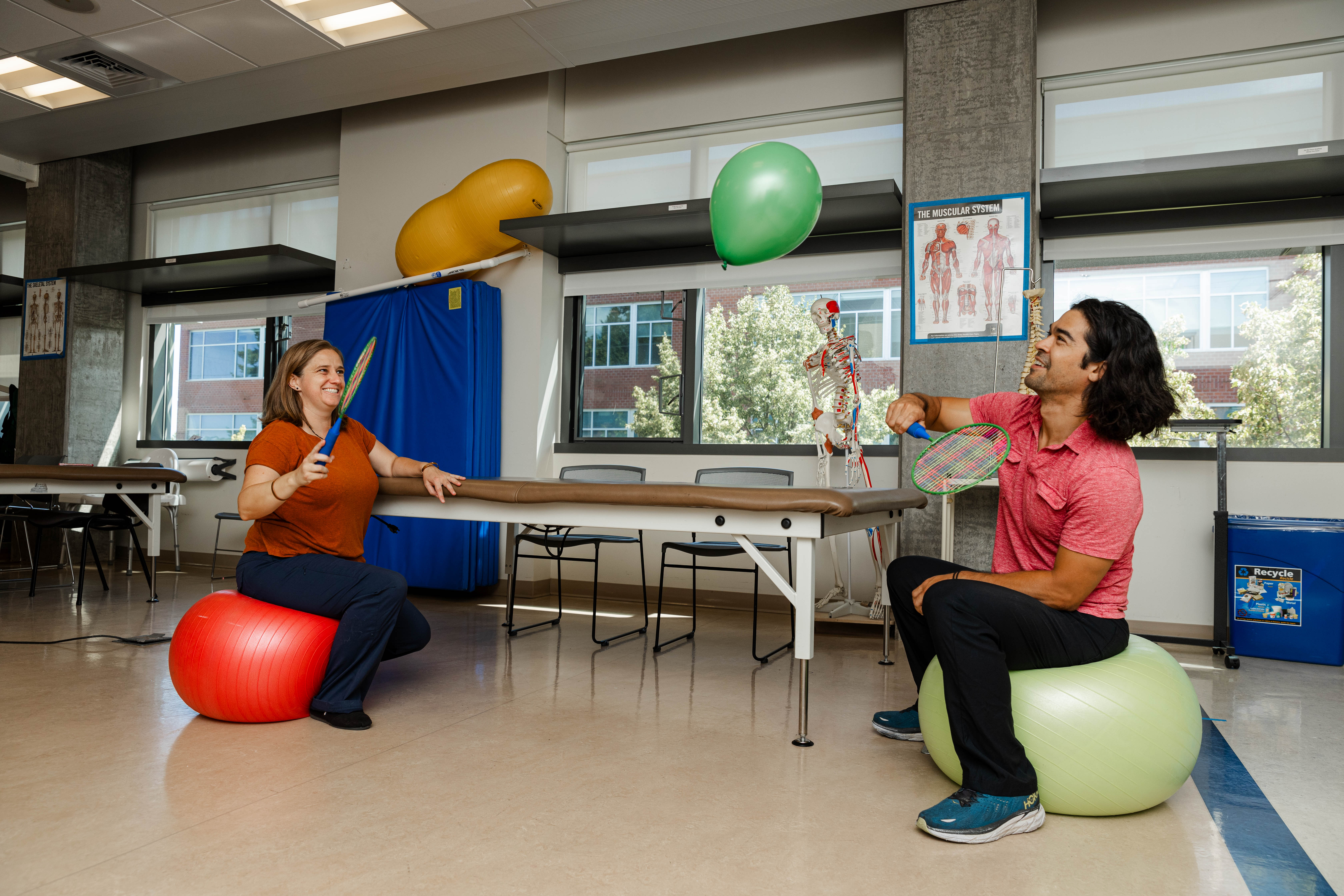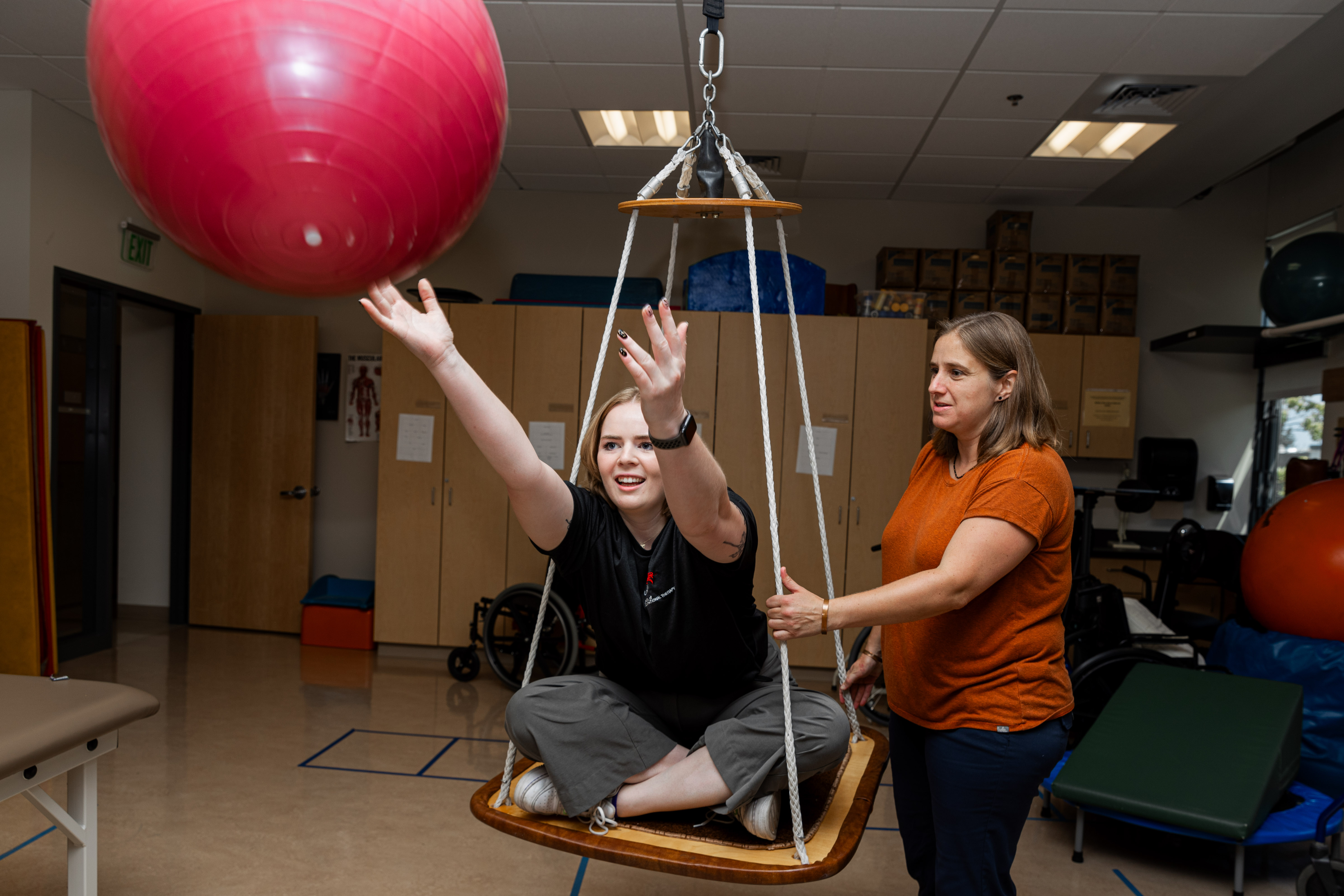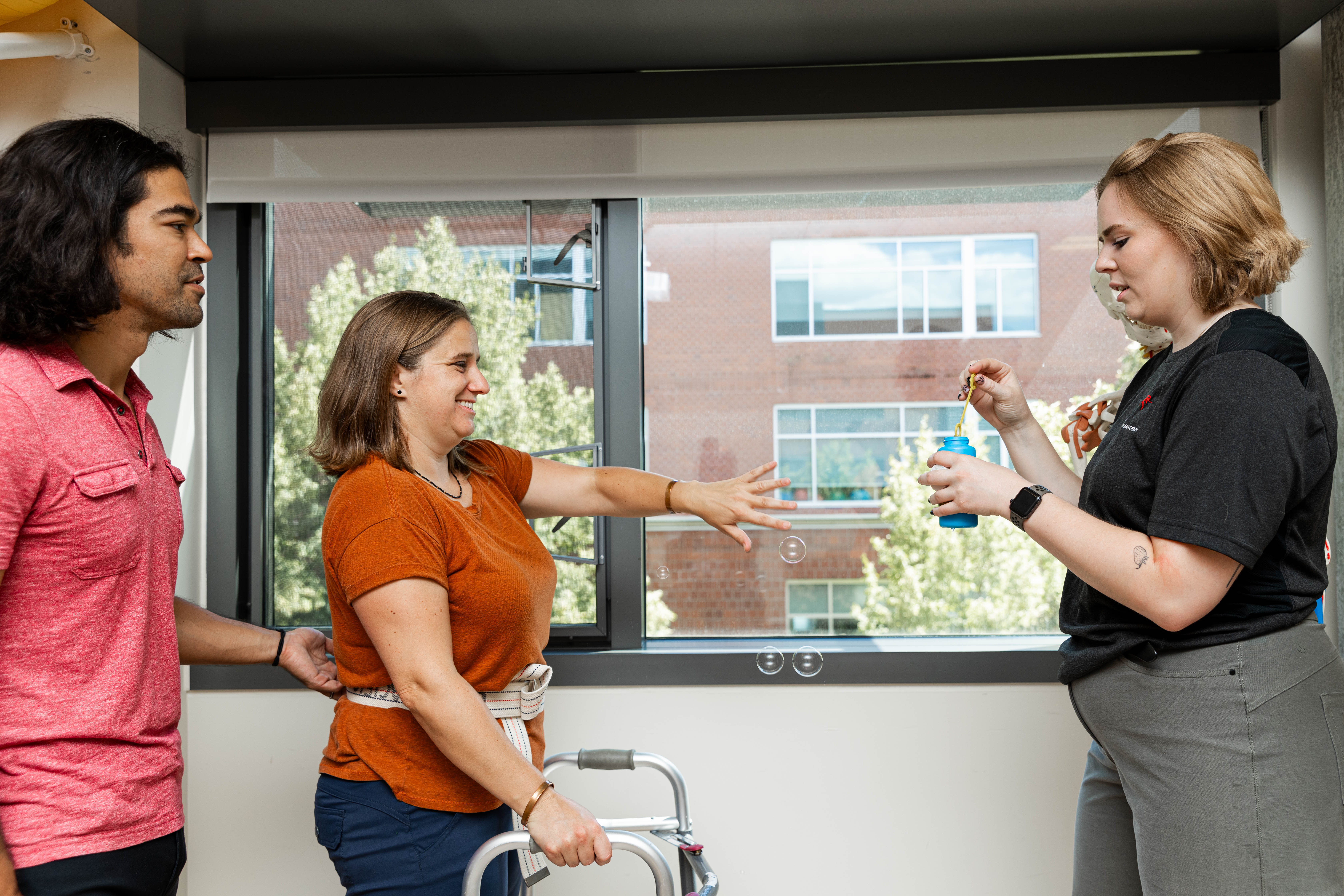How to Become an OT: A Comprehensive Guide

Become an occupational therapist to turn your passion for helping others into a rewarding healthcare career.
Admissions for Pacific’s School of Occupational Therapy open this fall through OTCAS! Get your application ready by exploring our applicant requirements and speaking to an admissions counselor today!
Richly rewarding and consistently evolving, a career in occupational therapy (OT) is the perfect fit for those who want to improve the lives of others in tangible, meaningful ways.
Significantly shorter than medical school — a doctorate in occupational therapy (OTD) can be achieved in just three years after undergrad — occupational therapy school includes hundreds of hours in clinical settings directly helping patients and creating treatment plans.
Couple this with competitive salary, even higher job satisfaction, and a diverse array of career opportunities, and it’s clear that OT school is the perfect place for people who want to make a difference.
So how do you become an occupational therapist? It’s not as complicated as you might think.
BROWSE OT PROGRAM PREREQUISITES
Step 1: Explore Your School’s OT Prerequisites
Like many healthcare professional programs that don’t require medical school (such as optometry, physical therapy, and audiology) a specific undergraduate degree is not required for most graduate OTD programs.
Rather, the education required to be considered for occupational therapy school is made up of a set of prerequisite courses that prepare applicants to be successful in an OTD program.
While a pre-occupational therapy track (like the one offered by Pacific) is designed to satisfy these prerequisites — which are made up mainly of anatomy, psychology, and math courses — participating in a pre-OT pathway is not required.
So get that computer science degree or delve deep into dance; as long as you get the required pre-reqs you can study what you’re passionate about and still attend OT school (a GPA of 3.0 or higher is encouraged).
Step 2: Prepare Your OT School Application
Completing pre-reqs is only one facet of applying for the best schools for occupational therapy (Pacific’s OTD program is within the top 40 in the United States).
As you approach the opening of OT school admissions, you might want to consider the other application materials that may be required for your specific program.
Here’s some ways you can make your OT school application stand out:
-
Supervised Clinical Observation. Whether in private practice, hospitals, or schools, experience observing certified occupational therapists will not only allow you greater insight into the profession, but show a dedication to learning more about what it means to be a licensed OT.
Pacific requires a minimum of 20 hours of observation in a professional setting, but the more time you spend around OT professionals the stronger your application will be.
-
Letters of Recommendation. Three letters of recommendation are required at Pacific.
These letters should be written by people who can attest not only to your drive to help others, but also to your problem solving and people skills.
-
Personal Essays. The application for OT school (more on that in a moment) requires a personal statement.
This brief essay should not only convey why you want to attend the specific program, but also what compels you to become an OT.
-
Pre-OT clubs. Connecting with your school’s pre-occupational therapy club is a great way to gain access to licensed OTs in your area to arrange observations, write letters of recommendation, and more.
Plus, the cohort of students in your pre-OT club are a great resource should you have questions about the application experience.
Step 3: Research Programs and Apply with OTCAS

There are over 200 occupational therapy programs in the United States alone, so choosing from that list can seem totally overwhelming.
To help pare down your options, consider your long term career goals after you become an OT.
Want to work with children? Choose a program with pediatric placements. Interested in ergonomics? Look for schools that partner with kinesiology programs. Endeavor to run your own clinic or business? Pacific has an accompanying Healthcare Management MBA that you can complete at the same time!
Regardless of what you choose, make sure you prioritize OT programs that guarantee clinical placements for at least half of the degree’s duration.
OT students at Pacific spend nearly the entirety of their third year out in clinical environments.
What is OTCAS?
The Occupational Therapy Centralized Application Service (OTCAS) is your portal for applying to OT school and enables you to submit to all of the programs on your list in as little as a single sitting.
While certain application requirements may differ between schools, sending your transcripts, recommendation letters, and essays is simple and straightforward.
Submit before your school’s preferred deadlines and OTCAS takes care of the rest.
Compile your list of schools, research program requirements, and submit your application, all in one place.
One of the main reasons I chose Pacific University was because of the OT program's dedication to promoting and advocating for occupational justice…Pacific University emphasizes the importance of occupational rights, equity, and equality for all individuals in society.
– Julia Pastrana '26
Step 4: Get in and Take Advantage

After months of waiting patiently for a response you’ve gotten in and accepted a position in your new occupational therapy program.
Congratulations! But now what?
Most OT schools have very structured program schedules that enable students to graduate on time.
However, there is still a lot to explore and discover during your three years and ways you can take full advantage of everything your program has to offer.
Here’s what we recommend:
-
Join SOTA. The Student Occupational Therapy Association (SOTA) is a student-organized club that operates within OT programs.
Members develop professional skills that are easily transferable in their career and get the opportunity to make connections with working professionals in their area.
-
Get involved with the community. Due to the highly clinical nature of most OT programs, opportunities to get out and help those in your community are frequent.
Prospective health professionals across Pacific’s School of Health Professions venture into the communities throughout the Portland metro area to hone and skills and help others.
-
Participate in research. The expert faculty at most OT programs (many of whom are current or past OT practitioners) are eager to collaborate with students on research and on helping students publish their findings.
-
Learn from other programs. OTs are highly collaborative health professionals, working often with medical doctors, speech therapists, and physical therapists.
Interdisciplinary certificate programs like those at Pacific can enable you to graduate with more skills and explore more career options by learning from other programs.
Step 5: Get Certified and Begin Your Career
As you approach graduation, you will start to think about taking the National Board of Certification for Occupational Therapists (NBCOT) exam, which certifies those who pass to practice occupational therapy in the United States.
In 2022, Pacific graduates passed the exam with a 97% rating, higher than the national average.
This, combined with Pacific’s high graduation rate for OT doctoral students — 97.5% in 2022, again higher than the national average — results in a program prepared to send students off into the workplace prepared and certified.
Once you are certified you can begin to practice occupational therapy and help those in your community lead more fulfilled lives.
I was really drawn to the makeup of my cohort. We have students that came to grad school straight from undergrad, some who have been working for years and are making a career change, and others have been out of undergrad for a few years or more working...Our different paths make our conversations, both academic and personal, really wonderful to engage in and listen to.
– Elle Holzman '25
Want to learn more before you apply? Connect with an admissions counselor today and inquire today.


